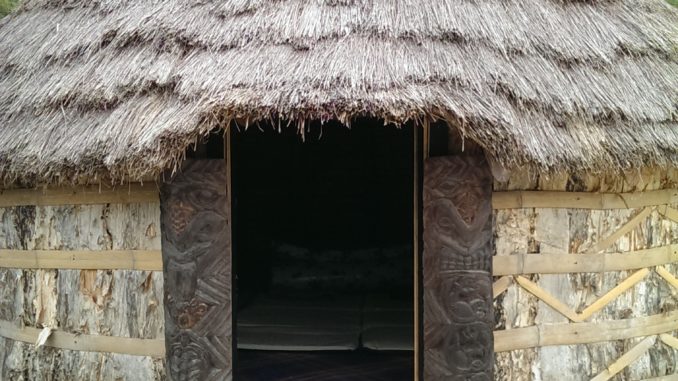
In Le Monde 15/09/2020 (original text in full)
Whatever the outcome of the October 4 referendum on New Caledonia’s independence, the future of the Vale-Goro nickel mine will probably have had an impact on the outcome of the vote.
What is the problem? The Goro nickel and cobalt mine and refinery in the south of Noumea has been in deficit for fifteen years. The owner, the Brazilian Vale, has instructed Rothschild Paris to sell it. Begun in February 2020, this bidding process is a sum of contradictions.
The first surprise results from the selection of the mine’s buyers. On May 26, an Australian company, New Century Resources (NCR), was selected. Since it was not allowed to visit the industrial site, the competing offer from the New Caledonian company of the Northern Province, Sofinor, associated with the Korean world leader, Korean Zinc, was not able to be presented in full.
Despite warnings, Vale did not anticipate that keeping the Sofinor at a distance would increase the country risk. Indeed, frustrated, the Caledonians, who are at one with their mining activity, expressed themselves in the streets. Nowadays, modern mining companies do not invest against local populations, but involve them.
Second contradiction, NCR, is a small company without financial base, but it had to find approximately 1 billion dollars to ensure the resumption of Goro. The seller valued the plant at zero and in addition brought in $500 million; Paris granted the equivalent of $300 million in financial and tax facilities. Then, $27 million came from IGO, a shareholder of NCR, and $75 million lent by an Anglo-Saxon investment fund, Orion Resources. But suddenly, at the end of August IGO stopped supporting the Goro takeover project, took back its $27 million and sold its NCR shares. Orion also dropped the deal on September 4.
Third surprise, neither NCR nor its partners had the competence to operate the hydrometallurgical plant, nor any real environmental references to manage the tailings dam. Rumour had it that NCR had contacted its competitor, Sofinor-Korean Zinc, to request technical assistance.
Fourthly, Vale was leaving Noumea but was to remain the recipient of the mine’s product. NCR planned to export one intermediate material, nickel hydroxide, at a profit, notably to Vale’s Chinese plant in Dalian. The metallurgical margins would have been made in China and the nickel sold to Chinese battery manufacturers and Tesla.
Fifthly, all these contradictions were felt locally, probably wrongly, as the beginnings of a « stock market coup ». Once the sale was made, with NCR’s capital increasing in value, its resale at a high price to a hypothetical North Asian mining company could resemble a stock market scheme such as that of Uramin, which precipitated the fall of Areva.
These contradictions naturally led to failure. On September 8, NCR made the decision to withdraw. The project was obviously fragile.
Yet in Asia nickel remains a metal whose geopolitics are tense. Fifteen years ago, world nickel production of 900,000 tons was dominated by sulfur deposits in the polar regions of Russia’s Norilsk Nickel and Canada’s Inco (absorbed by Brazil’s Vale in 2006). By 2020, it is about 2.5 million tons and is now dominated by tropical lateritic deposits in Southeast Asia, particularly in Indonesia, the Philippines and New Caledonia, although Russian and Canadian-Brazilian companies still produce as much.
This shift in production dominance from Polar Regions to tropics was welcome. As the former could no longer produce, the irruption of the Chinese steel industry multiplied nickel prices tenfold in 2007. Beijing was now importing nickel ore from Indonesia and the Philippines and processing it at home into nickel cast iron. As a result, Chinese steelmakers were directly burying this intermediate product. They were securing their supplies while reducing their costs.
Subsequently, Indonesia’s policy of resource nationalism banned the export of this ore and made it mandatory to process it locally. This is why Chinese steel mills flourished at the foot of the mines. Jakarta now exports stainless steel to China and is preparing for the same move for batteries charged with nickel and cobalt. Worldwide, 68% of nickel is consumed in steel, 27% in the alloys sector; batteries are still in their infancy.
During this period New Caledonia multiplied its capacities by four. To the SLN-Eramet plant, today under safeguard procedure, were added the South Vale-Goro now on sale, the North SMSP-Glencore which remains under capacity and the Caledonian SMSP-Posco plant … located in South Korea. The latter is profitable because its break-even point is one of the lowest in the world. Exports of minerals to the Japanese steel industry complete the picture.
Representing less than 10% of the world production of nickel, the Caledonian mining industry remains nevertheless the economic lung of the island. But will Vale continue the sale or close the factory? On 14 September, the Congress of New Caledonia debated this question.
The latter was indeed auditioning two candidates.
A Caledonian mining subcontractor, Byms, backed by an investment fund, but without further details and the Sofinor.
Sofinor presented a detailed project: desire for a common strategy between North and South of New Caledonia, no relocation overseas, reopening of the refining plant, preserving margins in Nouméa then exporting finished products to European companies consuming nickel, in particular the battery manufacturers grouped together in the European Union project, « the Airbus of batteries ».
This approach by the congress is probably the direction that will enable a restoration of a full political meaning of the October 4 referendum by relieving it of an economic nickel burden that it should never have had to carry.